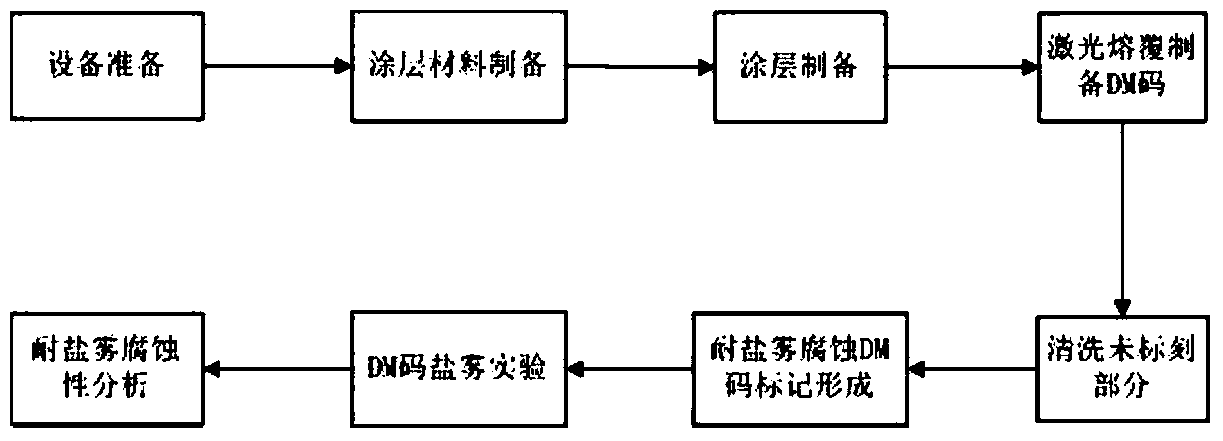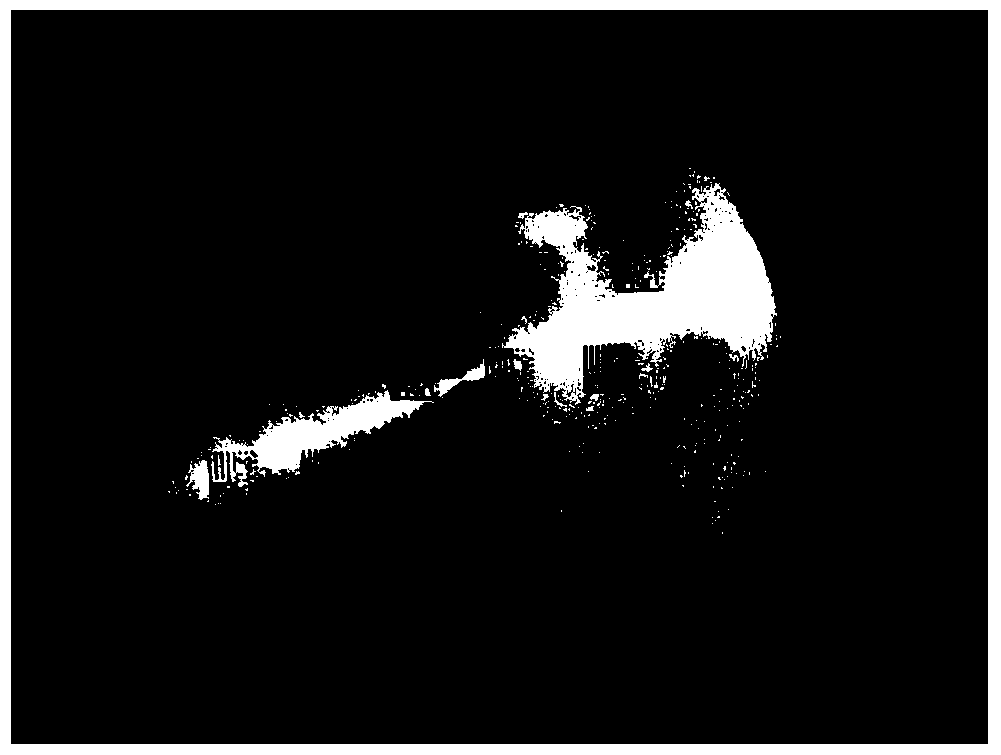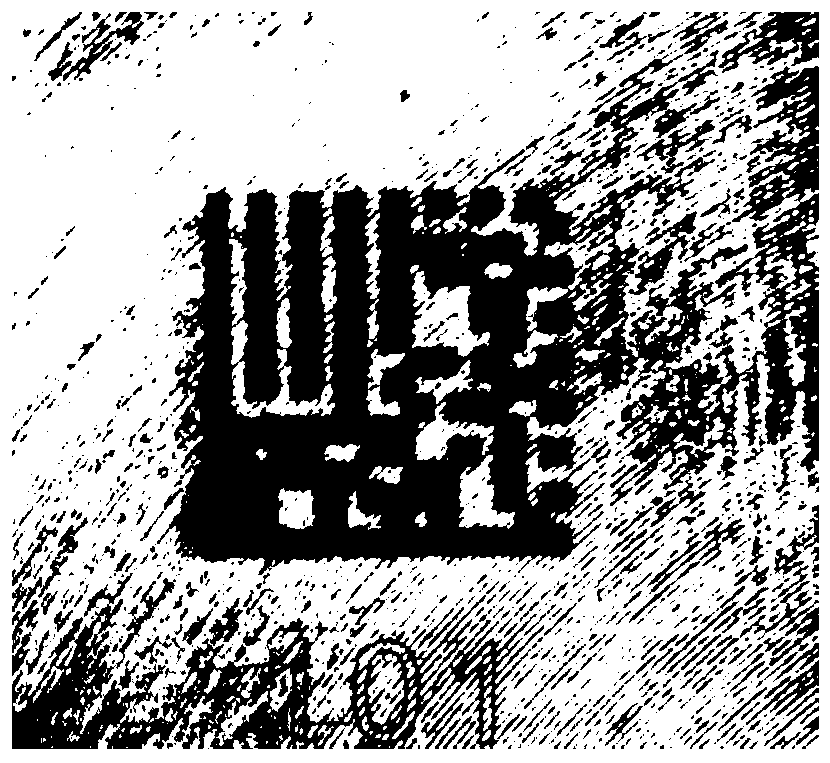A method for marking aluminum alloy corrosion-resistant two-dimensional codes based on laser cladding
A technology of laser cladding and aluminum alloy, which is applied in the field of laser marking to improve the corrosion resistance of DM codes on the surface of aluminum alloys. It can solve problems such as data loss, edge or module blur, DM code readability, etc. Improved salt spray corrosion resistance, pollution prevention, and improved salt spray corrosion resistance
- Summary
- Abstract
- Description
- Claims
- Application Information
AI Technical Summary
Problems solved by technology
Method used
Image
Examples
Embodiment 1
[0059] In this embodiment, the aluminum alloy sheet material with the grade of 2A12 is selected as the aluminum alloy test piece to be marked, and its specification is Ф50*5mm.
[0060] The steps of this embodiment are:
[0061] Step 1: Prepare laser cladding coating:
[0062] Step 1.1: Mix nickel-based alloy powder (nickel-based alloy powder grade is Ni20) and graphite powder in a mass ratio of 20:1 and place them in a ball mill to fully mix; mix the obtained mixed powder with absolute ethanol and varnish according to the mass ratio 20:2:1 ratio and fully stirred and mixed to obtain the coating material.
[0063] Step 1.2: Coat the coating material evenly on the surface of the aluminum alloy test piece, and then place the aluminum alloy test piece in an electric blast drying oven to dry at a drying temperature of 100 degrees Celsius and a drying time of 60 minutes. Before coating the coating material, it is necessary to grind the surface of the aluminum alloy specimen so th...
Embodiment 2
[0086] In this embodiment, the aluminum alloy sheet material with the grade of 2A12 is selected as the aluminum alloy test piece to be marked, and its specification is Ф50*5mm.
[0087] The steps of this embodiment are:
[0088] Step 1: Prepare laser cladding coating:
[0089]Step 1.1: Mix nickel-based alloy powder (nickel-based alloy powder grade is Ni20) and graphite powder in a mass ratio of 20:1 and place them in a ball mill to fully mix; mix the obtained mixed powder with absolute ethanol and varnish according to the mass ratio 20:2:1 ratio and fully stirred and mixed to obtain the coating material.
[0090] Step 1.2: Coat the coating material evenly on the surface of the aluminum alloy test piece, and then place the aluminum alloy test piece in an electric blast drying oven to dry at a drying temperature of 100 degrees Celsius and a drying time of 60 minutes. Before coating the coating material, it is necessary to grind the surface of the aluminum alloy specimen so tha...
Embodiment 3
[0113] In this embodiment, the aluminum alloy sheet material with the grade of 2A12 is selected as the aluminum alloy test piece to be marked, and its specification is Ф50*5mm.
[0114] The steps of this embodiment are:
[0115] Step 1: Prepare laser cladding coating:
[0116] Step 1.1: Mix nickel-based alloy powder (nickel-based alloy powder grade is Ni20) and graphite powder in a mass ratio of 20:1 and place them in a ball mill to fully mix; mix the obtained mixed powder with absolute ethanol and varnish according to the mass ratio 20:2:1 ratio and fully stirred and mixed to obtain the coating material.
[0117] Step 1.2: Coat the coating material evenly on the surface of the aluminum alloy test piece, and then place the aluminum alloy test piece in an electric blast drying oven to dry at a drying temperature of 100 degrees Celsius and a drying time of 60 minutes. Before coating the coating material, it is necessary to grind the surface of the aluminum alloy specimen so th...
PUM
| Property | Measurement | Unit |
|---|---|---|
| surface roughness | aaaaa | aaaaa |
Abstract
Description
Claims
Application Information
 Login to View More
Login to View More - R&D
- Intellectual Property
- Life Sciences
- Materials
- Tech Scout
- Unparalleled Data Quality
- Higher Quality Content
- 60% Fewer Hallucinations
Browse by: Latest US Patents, China's latest patents, Technical Efficacy Thesaurus, Application Domain, Technology Topic, Popular Technical Reports.
© 2025 PatSnap. All rights reserved.Legal|Privacy policy|Modern Slavery Act Transparency Statement|Sitemap|About US| Contact US: help@patsnap.com



